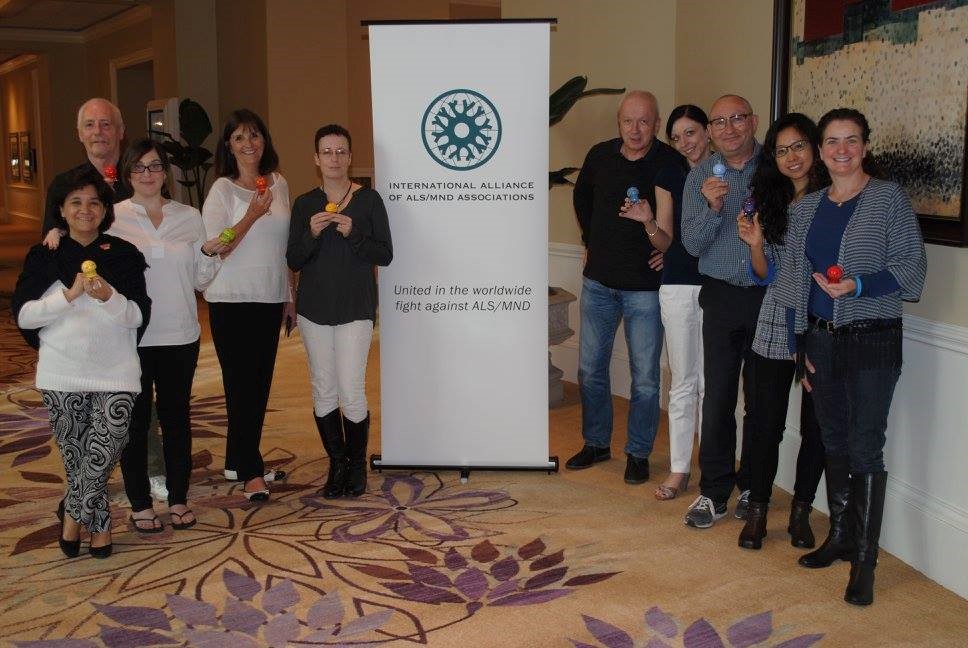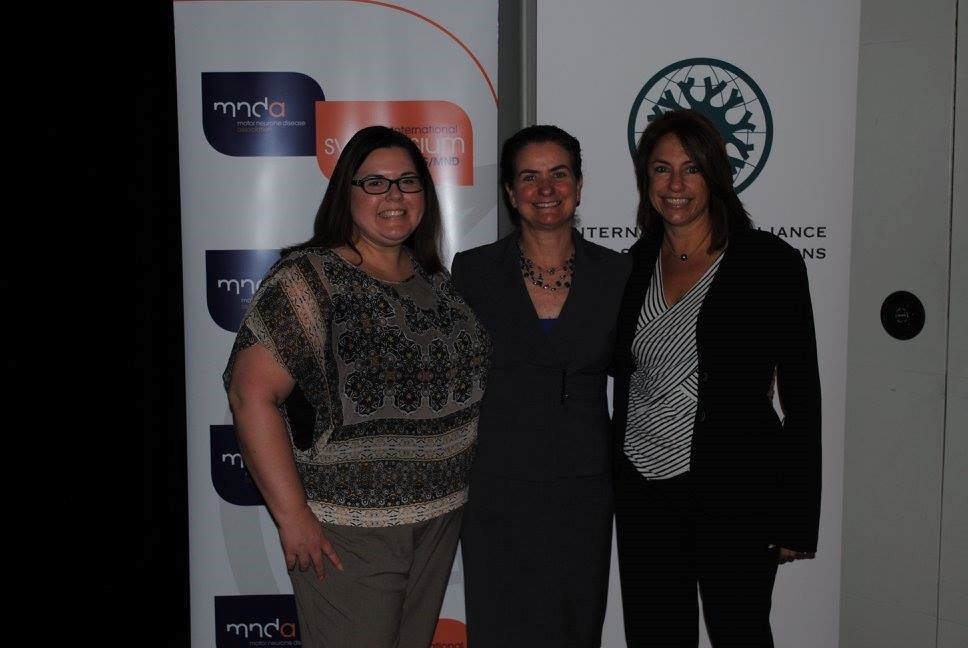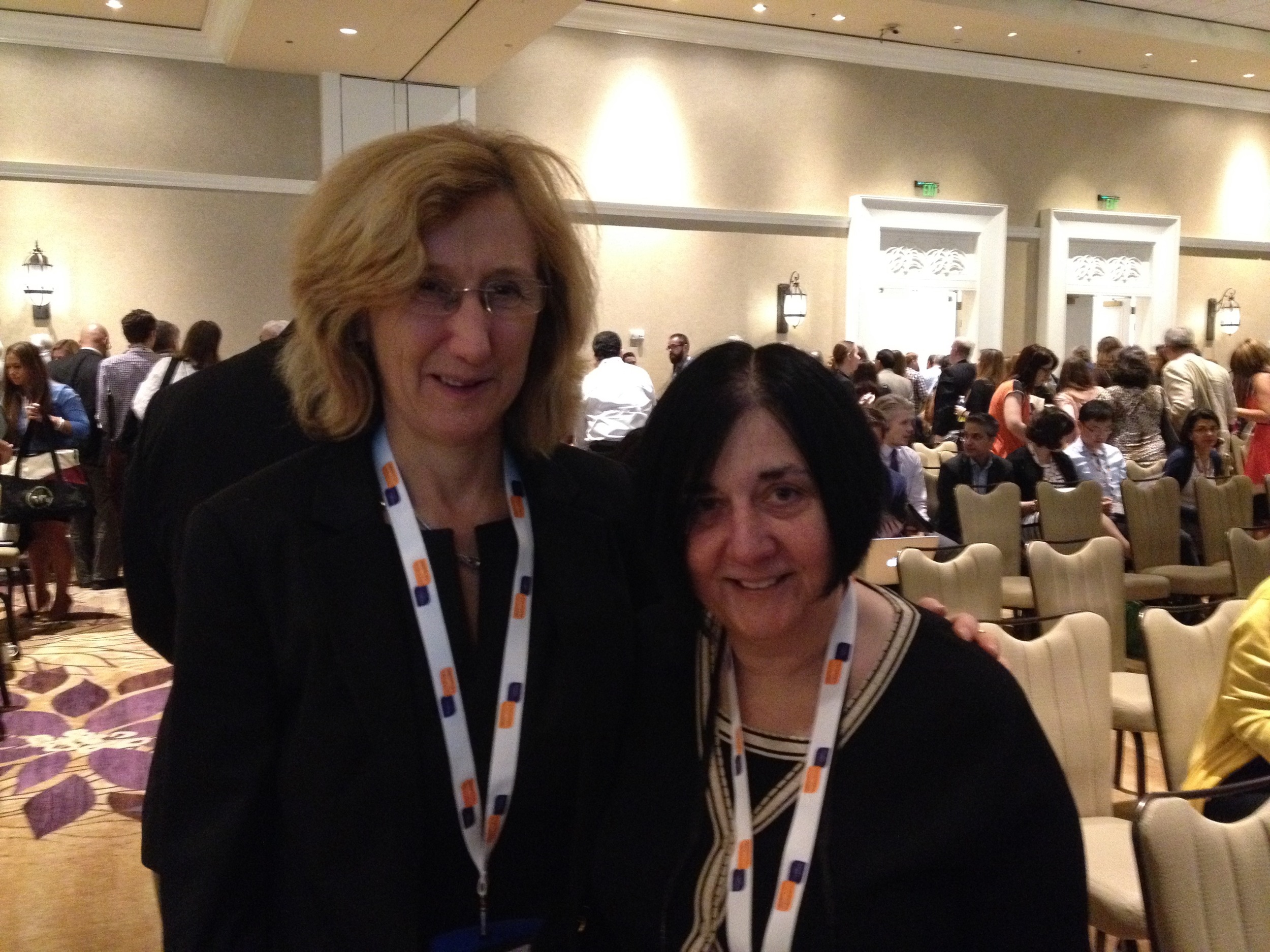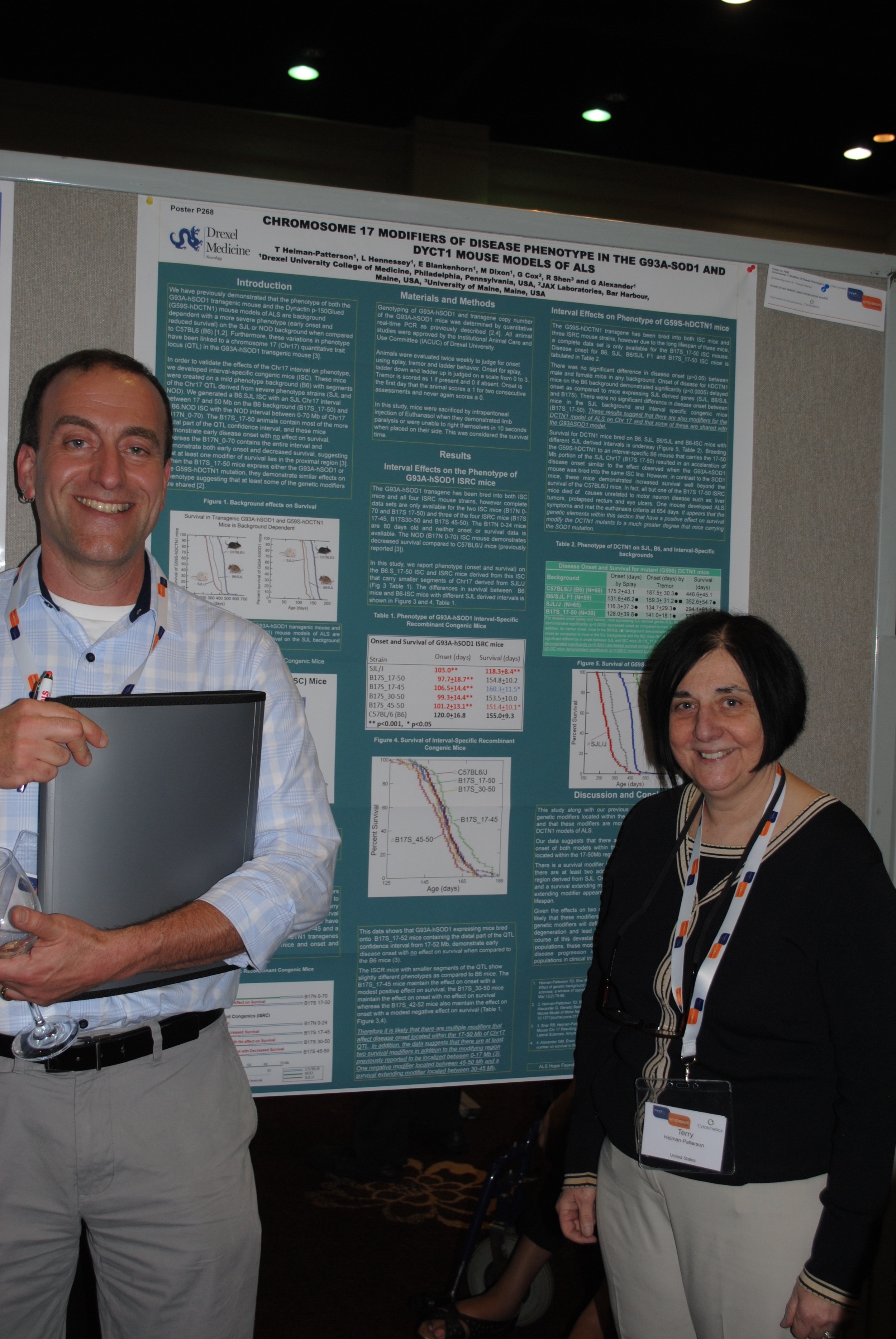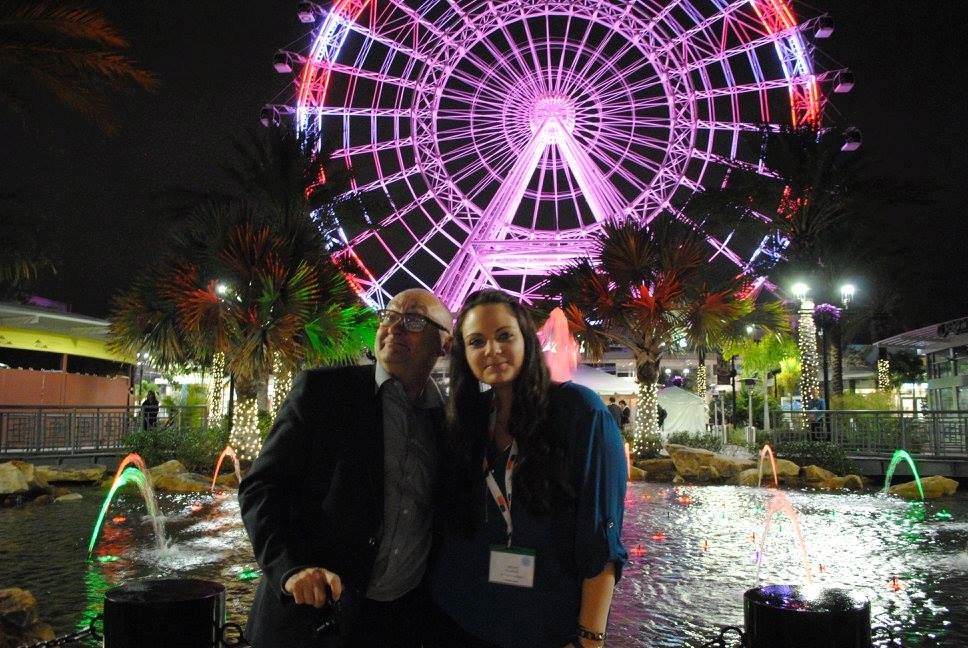Highlights from RESNA 2016
/RESNA (Rehabilitation Engineering and Assistive Technology Society of North America) and NCART (National Coalition for Assistive and Rehab Technology) held their 2016 Conference, Promoting Access to Assistive Technology, in Arlington Virginia this past week. Sara Feldman, the Physical Therapist and Assistive Technology Professional at the MDA/ALS Center of Hope attended the conference and reported on her experience.
The week began with a full day Instructional Course given by Emma Smith, JumpStart Occupational Therapy, on “Access to Mobile Devices for Individuals with Physical Disabilities. This was a hands-on workshop where we were able to try the different options available in our own mobile devices as she presented them as well as try the adapters and switches she provided. This was one time when everyone was encouraged to play with his or her phone in class!
Pictures from Emma Smith's workshop
The next day brought the main conference, which has tracks focusing on different aspects of assistive technology, but every class seemed to have a mix of end users, clinicians, engineers, researchers, suppliers and manufactures. Many people carried more than one of those roles! The opening plenary session focused on “Research As the Keystone to Improving Assistive Technology.” The panel included Carla Bailo, from Ohio State University and ECOS Consulting; Ann Spungen, from Icahn School of Medicine at Mt. Sinai and the Veterans Administration; and Kenneth Ottenbacher, from the University of Texas Medical Branch.
Next I attended the Accommodations Show and Tell, where different presenters show different accommodations or adaptations that they have recently made. It is a fast paced but genial environment for people to share their success stories. I pretty much just listened in amazement to some of them and with inspiration to others. One engineer from Puerto Rico designed his own switches and switch interface for the iPod from easily acquired items; Therese Willkomm (via video) presented several “homemade” mounts to hold devices on the wheelchair or tabletop; and two different apps in development were shown, one for home accessibility and one for multiple alarms. There were two other interesting presentations on specific work accommodations.
The next session was from Steven Mitchell, Cleveland VA Medical Center, “Using Ice Cubes to Make Snowflakes: Addressing Power Mobility Needs in ALS Using Common Configurations” was relevant and he had some good points to consider. In his experience, he saw many individuals with ALS for PWC evaluations and noticed a pattern in certain modifications he requested in head and arm supports. He now asks his vendors to supply these items earlier on in the evaluation and fitting process.
A Town Hall type meeting on the issue of Complex Rehab Technology ended the day. Too many stories were told of people with disabilities not being able to access the assistive technology they need due to CMS and insurance providers. Frustration was expressed by the end users as CMS has seemed to taken them completely out of the picture; frustration from the clinicians who are trying to prescribe the most appropriate equipment but are facing denials; frustration from the suppliers as they are feeling pressure from their clients to get the equipment and from their billing department to wait until the approvals come through; and frustration from the engineers and manufacturers who watch as their products and designs that can make such a difference in a person’s life go unused. There was a contingent going to speak to the legislature on Thursday and express their concerns. Everyone was encouraged to continue to reach out to their local representatives.
Wednesday morning’s Plenary Session, “Advancing Policies that Improve Access to Assistive Technology,” revealed a panel of federal officials and Washington based policy experts. John Wren, is the Deputy Administrator for the Center for Integrated Programs within the Administration for Community Living; Jennifer Sheehy is the Deputy Assistant Secretary of the Office of Disability Employment Policy in the US Department of Labor; John Tschida is the Director of the National Institute on Disability, Independent Living, and Rehabilitation Research; Peter Thomas is a principal with Powers, Pyles, Sutter and Verville, a Washington DC based law firm. Each expressed their own personal experience living with a disability as a part of their presentation. The first three gave an overview of what their agencies were doing to advance policies in regard to assistive technology, but Mr. Thomas’s tone was not as confident in the federal government. His comments brought several rounds of applause in support when he expressed the thoughts of many that the rules governing appropriate access to AT are “ridiculous.” “DME (durable medical equipment) has been cut to the bone and we have to push back.” There was some discussion on how this gets done, and it came down to the constituents letting their legislators know how they feel. “Lots of volume and loud voices make change.”
The next session was a fun demonstration on the work out of Craig Hospital on making video games accessible for individuals with disabilities. The presenters, Erin Muston-Firsch, OT and Patrick Wagner, RET, were a great team and showed us the spectrum of options including changes you can make within some games operating system; modifications or additions to the users current controls; adaptive controls you can purchase; and some of the custom devices they have fabricated for their clients. While gaming does not often come up in my experience, ability to control access to entertainment systems does, so I found this session both informative and entertaining.
Next, the Communication Technology and Computer Access group hosted a session to “share solutions and ignite ideas.” And it did just that! The hour and a half was packed with information about exciting new technologies that people wanted to share. The highlights for me included a platform built of what looked like modern-day erector set, Servocity.com, that would move a Quadjoy mouse into position for someone with quadriplegia; the GlassOuse Assistive Device head mouse that moves the cursor with the movement of your head and clicks by biting on a switch; TobiiDynavox’s communication software now has a dwell free keyboard that works like Swype, allowing the user to type without dwelling on each letter individually; a “face switch” using the regular webcam and using the Xbox sensor; other options for mounts from Octa; adaptations to your power port that will turn it into a USP port, Startech.com, or add the magnetic force to make it easier to attach, magnetic lightening, Geepin.net.
The final presentation of the day was from the United Spinal Association about their advocacy work and we were all encouraged again to contact our representatives. Their website offers more information about their work and the issues facing many people with disabilities including PALS.
Thursday morning began with an excellent presentation about new ideas in access to AAC technologies for people who have minimal movement. Melanie Fried-Oken from Oregon University, Susan Fager from Madonna Rehab and Tom Jakobs from Invotek presented together. They described their work with the brain computer interface they are researching at Oregon University which presents the letter choices in a novel way; on the use of multiple access methods for AT, of interest because this is what so many PALS encounter as the ALS progresses; and finally on the SmartPredictor App which allows caregivers to assist communication by enhancing the word prediction in the users system, so the user is still the primary communicator and the caregiver is providing assistance behind the scenes. Hearing how passionate they are and how collaborative their work is was a great way to start the day!
We then came back together as a large group to address the issues around outcome measures for assistive technology use. This issue is front and center at RESNA as evidence based practice is leading us toward collecting data on users of AT. The barriers to collecting this data as well as the opportunities for collecting relevant information discussed. All of the attendees input was collected and we expect to hear more on this topic soon.
Blue Sky designs then demonstrated their power mounts which will allow the user to position and reposition their AT (computer, communication device, camera, etc…) with an app or a switch. Their designs are in prototype at this time, but the usefulness of this type of mount was evident to all of us right away!
Permobil then demonstrated their app, the Virtual Seating Coach, designed to assist power wheelchair users with implementing and tracking their repositioning goals throughout the day.
The overall mood of the conference was positive and upbeat with true excitement about the innovations people were hearing about and the amazing technology available. There was however an undercurrent of dismay at the inability for the government, universities and insurers to understand the importance of assistive technology. AT is not being paid for, programs are being cut, equipment is being farmed out to the lowest bidder, and education for health professionals is not supported. Despite our concerns over these issues, there is a determination to continue to provide individuals with assistive technology and resources they need to use it.














